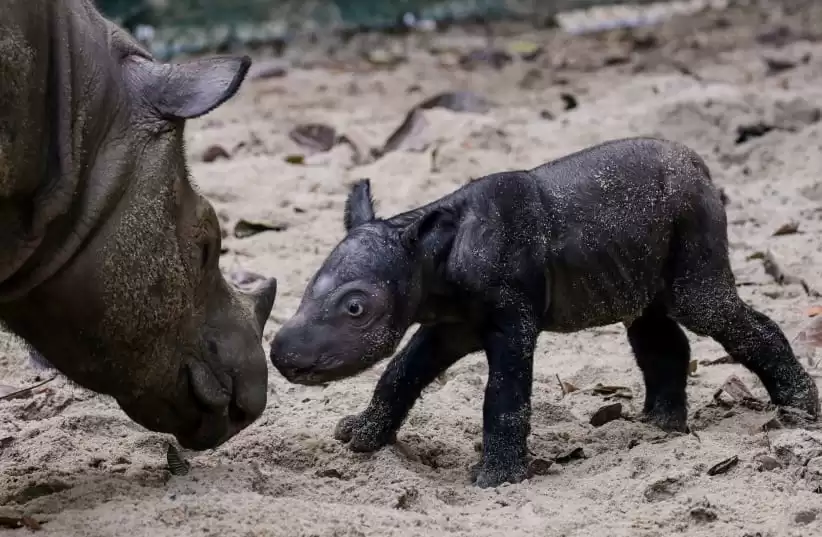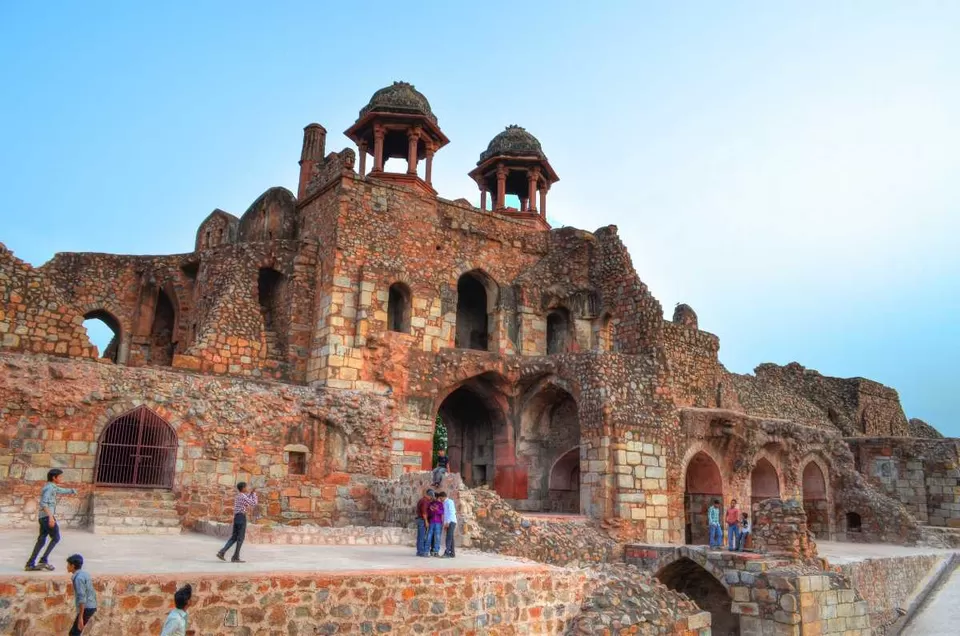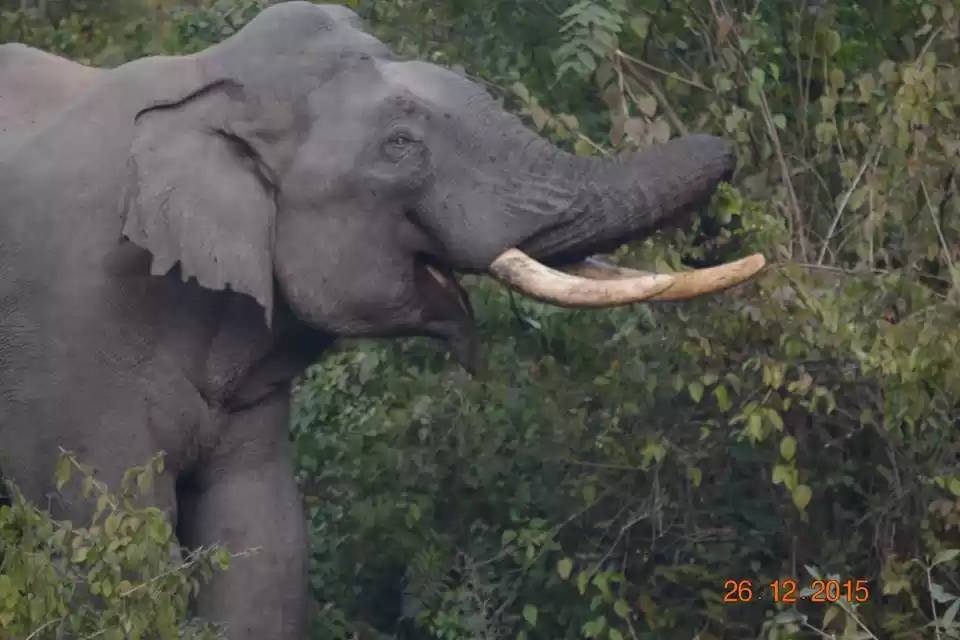Are you looking for a fun and educational outing with your family or friends? Do you want to see some of the most exotic and endangered animals in the world? If yes, then you should definitely visit the Delhi Zoo, also known as the National Zoological Park. The Delhi Zoo is one of the best zoos in Asia, with a large area, diverse species, and natural habitats. It is a must-see attraction for anyone who loves wildlife and nature.
In this article, we will give you a complete guide to the Delhi Zoo, including its history, animals, facilities, how to reach, nearby attractions, events and activities, and tips. Read on to find out why the Delhi Zoo should be your next destination.
History
The Delhi Zoo was inaugurated in 1959 by Pandit Jawaharlal Nehru, the first Prime Minister of India. It was designed by Major Aubrey Weinman, a British architect who also designed the London Zoo. The zoo covers an area of 176 acres and is divided into two sections: the animal section and the botanical section. The animal section has about 1300 animals belonging to 130 species from India and abroad. The botanical section has about 200 species of plants and trees that provide shade and beauty to the zoo.
The Delhi Zoo has been involved in various conservation and breeding programs for endangered animals, such as white tigers, Asiatic lions, Indian rhinos, swamp deer, brow-antlered deer, red jungle fowl, and golden pheasant. It has also exchanged animals with other zoos around the world to increase genetic diversity and prevent inbreeding.
The Delhi Zoo has also faced some challenges and controversies over the years, such as:
The death of several animals due to diseases, accidents, or negligence.
The escape of some animals from their enclosures or cages.
The attack of some animals on visitors or staff.
The protest of some animal rights activists against keeping animals in captivity.
Despite these challenges, the Delhi Zoo has maintained its reputation as one of the best zoos in India and has attracted millions of visitors every year.
Animals
The Delhi Zoo is home to some of the most amazing animals and birds that you can see up close and personal. You can witness their beauty, behavior, and diversity as you walk along the well-maintained paths and bridges that connect their enclosures. Some of the prominent animals and birds that you can see at the zoo are:

White Tigers:
The Delhi Zoo is famous for its white tigers, which are a rare genetic mutation of the Bengal tiger. They have white fur with black stripes and blue eyes. They are not albinos or a separate subspecies. The zoo has about 10 white tigers, which are kept in spacious moated enclosures with natural vegetation and water bodies.
Lions:
The Delhi Zoo has a pride of Asiatic lions, which are native to India and are critically endangered. They have a smaller mane than their African cousins and are more adapted to dry forests and grasslands. They are kept in large enclosures with rocks, trees, and caves that mimic their natural habitat.
Elephants:
The Delhi Zoo has two female elephants named Anarkali and Swarna Lata. They are Asian elephants, which have smaller ears and tusks than their African counterparts. They are very intelligent and social animals that form strong bonds with each other and their keepers. They are fed with fruits, vegetables, grasses, sugarcane, and bread.

Rhinos:
The Delhi Zoo has two male rhinos named Raju and Mohan. They are Indian rhinos, which have a single horn and a thick grey skin that looks like armor. They are herbivorous animals that graze on grasses, leaves, branches, and aquatic plants. They are kept in large enclosures with mud pools and water tanks that help them cool off in summer.
Deer:
The Delhi Zoo has several species of deer that roam freely in open grasslands or wooded areas. Some of them are swamp deer, spotted deer, sambar deer, hog deer, barking deer, mouse deer, blackbuck antelope etc. They are graceful and agile animals that feed on grasses, herbs etc.
Other animals that you can see at the zoo include monkeys (rhesus macaque), bears (sloth bear), wolves (Indian wolf), hyenas (striped hyena), jackals (golden jackal), foxes (Indian fox), leopards (common leopard), jaguars (black jaguar), panthers (black panther), cheetahs (Asiatic cheetah), giraffes (Rothschild’s giraffe), zebras (plains zebra), hippos (common hippo), crocodiles (mugger crocodile), alligators (American alligator), snakes (Indian cobra, python, viper etc.), turtles (Indian star tortoise, red-eared slider etc.), and birds (peacock, parrot, hornbill, pelican, flamingo, duck, crane, eagle, owl etc.).
Facilities
The Delhi Zoo offers various facilities for visitors to make their visit more comfortable and convenient. Some of the facilities are:
Battery-Operated Vehicles: The zoo provides battery-operated vehicles that can accommodate up to 20 people at a time. They are available at the main gate and charge Rs. 67 per person for a round trip. They are a good option for elderly or disabled visitors who cannot walk long distances.
Wheelchairs: The zoo provides wheelchairs for free to visitors who need them. They are available at the main gate and require a valid ID proof for security reasons. They are subject to availability and must be returned before leaving the zoo.
Cloakrooms: The zoo provides cloakrooms where visitors can store their bags, umbrellas, cameras, or other items for a nominal fee. They are located near the main gate and the exit gate. They are open from 9 am to 5 pm and charge Rs. 5 per item.
Canteens: The zoo has several canteens where visitors can buy snacks, beverages, ice creams, or souvenirs. They are located near the main gate, the exit gate, the white tiger enclosure, the lion enclosure, and the elephant enclosure. They are open from 9 am to 5 pm and accept cash or cards.
Drinking Water: The zoo has several drinking water points where visitors can refill their bottles or cups for free. They are located near the main gate, the exit gate, the white tiger enclosure, the lion enclosure, and the elephant enclosure. They are open from 9 am to 5 pm and have filters and coolers.
Toilets: The zoo has several toilets where visitors can use for free. They are located near the main gate, the exit gate, the white tiger enclosure, the lion enclosure, and the elephant enclosure. They are open from 9 am to 5 pm and have separate sections for men and women.
The Delhi Zoo also has some rules and regulations that visitors must follow for their own safety and the welfare of the animals. Some of the rules are:
1. The entry fee is Rs. 40 for adults and Rs. 20 for children above 5 years of age. The entry is free for children below 5 years of age and senior citizens above 60 years of age.
2. The timings are from 9 am to 4:30 pm on all days except Fridays and national holidays.
3. The tickets are available at the main gate or online through the official website of the zoo.
4. The visitors must carry a valid ID proof for verification purposes.
5. The visitors must not carry any food items, plastic bags, balloons, toys, weapons, alcohol, drugs, or pets inside the zoo.
6. The visitors must not feed, tease, touch, or disturb any animal or bird inside the zoo.
7. The visitors must not litter or damage any property inside the zoo.
8. The visitors must follow the instructions of the staff and security personnel inside the zoo.
Also check out: 7 Iconic Picnic Spots In Delhi To Revisit Your Childhood
How to Reach
The Delhi Zoo is located on Mathura Road near Purana Qila in New Delhi. It is easily accessible by different modes of transport such as metro, bus, car, or taxi. Some of the details are:

Metro:
The nearest metro station is Pragati Maidan on the Blue Line. It is about 2 km away from the zoo. You can take an auto-rickshaw or a cycle-rickshaw from there to reach the zoo.
Bus:
The nearest bus stop is National Zoological Park on Mathura Road. It is about 500 mtr away from the zoo. You can walk from there to reach the zoo.
Car:
You can drive your own car or hire a cab to reach the zoo. There is a parking facility near the main gate that charges Rs. 20 per car for four hours.
Taxi:
You can book a taxi online or offline to reach the zoo. There are many taxi services available in Delhi that charge according to distance and time.
Nearby Attractions
The Delhi Zoo is surrounded by some of the most famous and historical attractions in Delhi that you can explore after visiting the zoo. Some of them are:

Purana Qila:
Purana Qila is one of the oldest forts in Delhi that was built by Sher Shah Suri in the 16th century. It has three gates, a mosque, a museum, and a lake. You can see the light and sound show that narrates the history of Delhi at night.
Humayun’s Tomb:
Humayun’s Tomb is a UNESCO World Heritage Site that was built by the Mughal emperor Akbar in the 16th century. It is the first garden-tomb in India and the inspiration for the Taj Mahal. It has a magnificent dome, arches, and minarets. You can also see the tombs of other Mughal emperors and nobles in the complex.

India Gate:
India Gate is a war memorial that was built by the British in the 20th century. It is a 42-meter high arch that commemorates the Indian soldiers who died in World War I and the Afghan Wars. It has an eternal flame that burns in honor of the unknown soldiers. You can also see the names of the martyrs inscribed on the walls.

Lodhi Garden:
Lodhi Garden is a public park that was built by the Lodhi dynasty in the 15th century. It has beautiful gardens, fountains, ponds, and bridges. It also has some historical monuments such as tombs, mosques, and pavilions. You can enjoy a picnic, a walk, or a jog in this serene place.
Events and Activities
The Delhi Zoo organizes various events and activities throughout the year to educate and entertain visitors. Some of them are:

Animal Adoption Program:
The zoo offers an animal adoption program where visitors can adopt an animal of their choice for a year. They can contribute to the care and welfare of the animal and get a certificate, a photograph, and a plaque with their name on it. They can also visit their adopted animal anytime during the year.
Wildlife Week Celebration:
The zoo celebrates wildlife week every year in October to raise awareness and appreciation for wildlife conservation. It conducts various programs such as quiz, painting, essay, debate, puppet show, etc. for school children and general public.

Birdwatching Festival:
The zoo hosts a birdwatching festival every year in February to celebrate the diversity and beauty of birds. It invites experts, enthusiasts, and amateurs to observe and identify different species of birds that visit or reside in the zoo.
Educational Workshops:
The zoo conducts educational workshops for students, teachers, and researchers on various topics related to wildlife and environment. It provides practical training, field visits, lectures, demonstrations, etc. to enhance their knowledge and skills.
You may also like to check out: My trip to Chhatbir Zoo - adjacent to Chandigarh!
Tips
The Delhi Zoo is a wonderful place to visit for anyone who loves animals and nature. However, to make your visit more enjoyable and safe, you should follow some tips and suggestions:
1. Wear comfortable clothes and shoes that suit the weather and terrain of the zoo.
2. Carry water bottles and snacks with you as there are limited options inside the zoo.
3. Avoid littering or feeding any animal or bird inside the zoo as it can harm them or disturb their natural behavior.
4. Follow the map and signboards inside the zoo to avoid getting lost or missing any attraction.
5. Respect the animals and birds by maintaining a safe distance from them and not making loud noises or flash photography.
6. Listen to the announcements and instructions of the staff and security personnel inside the zoo for your own safety and convenience.
The Delhi Zoo is a complete package of fun, education, and adventure for anyone who visits it. It offers a rare opportunity to see some of the most exotic and endangered animals in their natural habitats.
It also provides various facilities, events, and activities for visitors to make their visit more comfortable and memorable. If you are looking for a place to spend some quality time with your family or friends, you should definitely visit the Delhi Zoo. You will not regret it.
We hope this article has given you a complete guide to the Delhi Zoo. If you have any questions or feedback, please let us know in the comments section below.
And if you liked this article, please share it with your friends and family who might be interested in visiting the Delhi Zoo too. Thank you for reading!













































